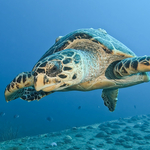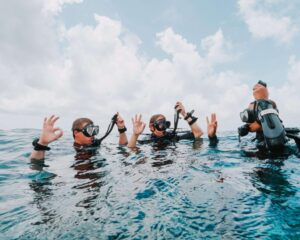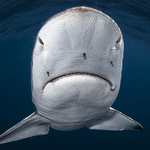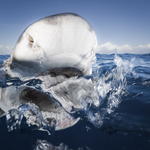
I am not a detective and I do not want to even open the door to try to suggest what has been the cause of historical and recent XR diving incidents but the interesting common denominator with the majority of these incidents is that the cause of death remains unknown as the diver fails to surface. When I hear of such incidents it does prompt me to examine and share with the diving community one topic that is simply impossible to ignore, and I can assure you with no doubt, that each diver that has failed to rejoin us for sure experienced this on their last fatal dive. Stress.
The Problem with Stress
Stress is an emotion characterized by an unpleasant state of inner turmoil. It is a normal human emotion we all experience when we face threatening or difficult situations. Stress is different from fear, which is a response to a real or perceived immediate threat, whereas stress is the expectation of future threat. Associated with the secretion of adrenalin, stress can help us avoid dangerous situations or get out of them. It can make us alert and it can spur us to deal with a threat or other problem and not simply avoiding it (i.e., the “fight or flight” reaction). However, if feelings of foreboding become too strong or last too long, they can hold us back from many normal activities and have debilitating outcomes.
A more intense form of stress is panic, a sudden, unexpected but powerful surge of fear. Panic can cause a wholesale flight from the immediate situation, a reaction that is especially dangerous for decompression divers. An XR diver who experiences panic at depth is subject to near-drowning, lung over-expansion injuries, decompression sickness and death. Panic attacks are extremely dangerous under water, and sometimes it is difficult to know what triggers them.
Out of the millions of certified XR divers, a percentage of those will die each year, but little is known about the precipitating events for many of these deaths. A coroner’s report of “drowning” tells us nothing about what led to, or caused, a divers’ death. Reports by DAN (Divers Alert Network) and other agencies into scuba diving accidents state that:
“Researchers in diving accidents implicate panic, as a response to stress or anxiety as the major cause of diving fatalities”
In Medical Examination of Sport Scuba Divers (1998), Alfred Bove states:
“Panic, or ineffective behavior in the emergency situation when fear is present, is the single biggest killer of sports divers”.
In 1998 the Recreational Scuba Training Council (RSTC) guideline for the Recreational Scuba Divers physical examination listed “a history of panic disorder” as an absolute contradiction to any form of scuba diving.
However, we must be very clear that there is no way to determine that panic in accidents does result in fatalities, this is merely an assumption based on knowledge of the psychological and behavioral responses that people make to stress. What we do know is that many people feel stress before a dive especially when they are starting out on their more advanced XR diving journey.
The Panic Attack
The essential feature of a panic attack is a period of intense fear that is accompanied by a sense of imminent danger and an urge to escape, or a desire to flee from wherever the attack is coming from. An expected result of a diver having a panic attack would be that the divers breathing rate increases, thereby resulting in decreased efficiency or oxygen exchange, and a feeling of suffocation ensues. The diver would then typically try to make a rapid ascent to the surface or departure from a certain location or frantically grabs for air supplies and lack of concern for the safety of others. Very problematic if there is a decompression obligation or if they are in an overhead environment.
Another way that panic can show itself is what we call passive panic. These divers are perceived as calm, they will sink, and perish without a call for help. The buddies of these divers thought their associates were non-stressed, and normal. Recognizing this form of panic is very difficult, the victims show no outward signs of any difficulty, but most will have “blank eyes”. Underwater they may lose their regulator and not try to replace it. They will not try to save themselves. Typically, a passive victim will seem confused, or vague and then slip underwater. It is the divers’ total inability to look after themselves and willingness to sink that appears in most case studies.
Either way the panic manifests itself it arises when individuals lack a solution to a critical problem. Sometimes, experienced divers with hundreds of logged dives also experience panic for outwardly no clear reason. The panic most likely occurs because divers lose sight of familiar objects, become disoriented and experience a form of sensory deprivation. The likelihood of a victim of panic coping with any situation is slim to none. In the study of divers’ death, many still had a form of a weight system in place, the mouthpiece from the regulator or breathing loop had been removed, wings or buoyancy compensators were not inflated, and there was still breathing gas available. This all suggest panic. One goal of all scuba diving agencies at all diving levels is to provide the diver with these “solutions” which should become automatic behaviors.
The Importance of Training
Training builds your diving confidence; nobody can argue this point. Years of research and tried and tested techniques have gone into the created of today’s diving programs. Modern day XR training has been specifically designed to ease stress and slowly build upon skills to a point where divers are ready to increase depths, penetration distances or decompression obligations. Organizations, such as SSI, have skills and procedures that divers must learn in sequence – these standards are adhered to by SSI Instructors worldwide. Studying theory, watching videos and learning skills in the confined water is followed by practicing in the open water with your instructor is a key learning philosophy of SSI that applies to all levels of training.
For divers training in XR programs, their basic diving skills should be habitual, this is essential now they will be going to enter a world where sometimes to “go up” is simply not an option. Decompression diving, throws into the equation even more potential stress situations that need to be trained for and managed well. The SSI training philosophy allows the diver to slowly develop at their own pace – only progressing when comfortable with each section.
Summary
The fact of the matter is that XR diving has inherent risks that simply cannot be removed. However, by participating in training programs, by gaining experience dives, by respecting our limitations and by gradually increasing the complexity of dives we can aim to make ourselves as divers as prepared as possible for the activity. Similarly, stress is an emotional factor that also cannot be eliminated from the human psychology. However, there are ways in which we can have better control on stress, awareness of where, when and how it can occur can enable us to keep a good handle on it. The underwater world can be as unpredictable as it is amazing, this is what keeps drawing us back to it.
Dive safe everybody.
Would you like to know what to do if your buddy is in trouble or has a panic attack? The SSI Specialty Course Diver Stress & Rescue prepares you for all situations. Read more.


The post Stress – The Silent Killer appeared first on Dive SSI.
Read MoreDiving, Extended Range, panic attack, skills, stress, trainingDive SSI




